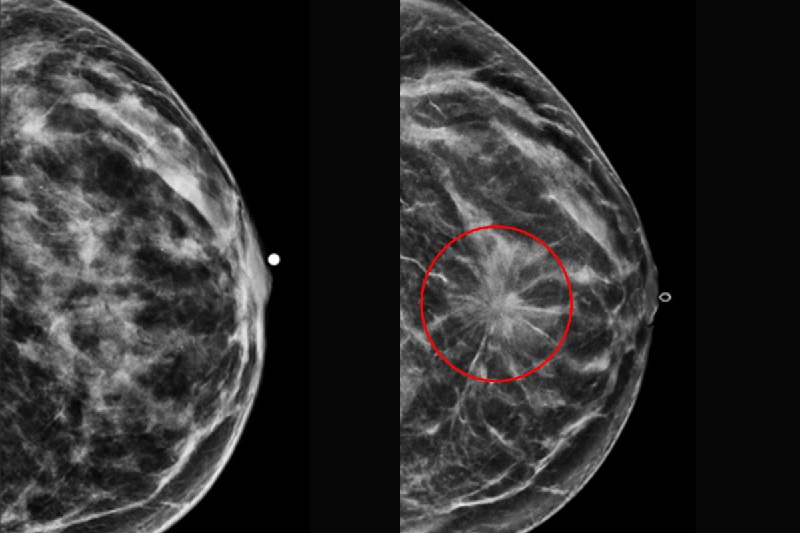AI Method Accurately Predicts Breast Cancer Risk by Analyzing Multiple Mammograms
Posted on 09 Dec 2024
Currently, there is no way to predict who is at risk of developing breast cancer based on mammogram images alone. While some risk-reduction strategies are available, such as the use of tamoxifen, these treatments may cause unwanted side effects. Most high-risk women are offered more frequent screenings or the option to include additional imaging methods, like MRIs, to detect cancer early. Now, a new study published in JCO Clinical Cancer Informatics introduces a breakthrough approach to analyzing mammograms, significantly enhancing the accuracy of predicting a woman’s risk of developing breast cancer in the next five years. By incorporating up to three years of previous mammograms, this new method identified individuals at high risk of developing breast cancer 2.3 times more accurately than the standard method, which relies solely on questionnaires about clinical risk factors such as age, race, and family history.
This risk-prediction model builds upon previous research conducted by Washington University School of Medicine (St. Louis, MO, USA), which revealed that earlier mammograms contain valuable insights into the early stages of breast cancer that may go unnoticed by even well-trained professionals. These insights include subtle shifts in breast density, which measures the relative amounts of fibrous and fatty tissue in the breasts. In the latest study, the team developed an artificial intelligence-based algorithm that can detect minute differences in mammograms, helping to identify women at the highest risk of developing breast cancer over a specific time period. Apart from breast density, the algorithm also evaluates other patterns, such as changes in texture, calcification, and asymmetry in the images. The new method is capable of spotting small changes over time in repeated mammogram images that are not visible to the human eye but are rich in information crucial for identifying high-risk individuals.

The researchers trained their machine-learning algorithm using mammograms from more than 10,000 women who had breast cancer screenings between 2008 and 2012. These women were followed until 2020, with 478 diagnosed with breast cancer during that period. The team then applied their method to a separate dataset of over 18,000 women who had mammograms between 2013 and 2020, with 332 of these women being diagnosed with breast cancer during follow-up. According to the new prediction model, women identified as high-risk were 21 times more likely to be diagnosed with breast cancer in the next five years compared to those in the lowest-risk group. In the high-risk group, 53 out of every 1,000 women screened developed breast cancer, while in the low-risk group, only 2.6 women per 1,000 screened developed breast cancer. In comparison, the older, questionnaire-based method correctly identified only 23 women per 1,000 as high-risk, missing 30 breast cancer cases that the new method detected.
The mammograms were taken from both academic medical centers and community clinics, demonstrating that the accuracy of this method remains consistent across various healthcare settings. Importantly, the algorithm was designed with significant representation of Black women, a group often underrepresented in breast cancer risk models. The predictive accuracy was consistent across racial groups. Ongoing work includes testing the algorithm in women from diverse racial and ethnic backgrounds, including Asian, Southeast Asian, and Native American women, to ensure its effectiveness for all populations. The researchers are also working on securing patents and licensing for this new method, with plans to make it widely available wherever screening mammograms are provided.
“Today, we don’t have a way to know who is likely to develop breast cancer in the future based on their mammogram images,” said co-author Debbie L. Bennett, MD, an associate professor of radiology and chief of breast imaging for the Mallinckrodt Institute of Radiology at WashU Medicine. “What’s so exciting about this research is that it indicates that it is possible to glean this information from current and prior mammograms using this algorithm. The prediction is never going to be perfect, but this study suggests the new algorithm is much better than our current methods.”




 Guided Devices.jpg)









